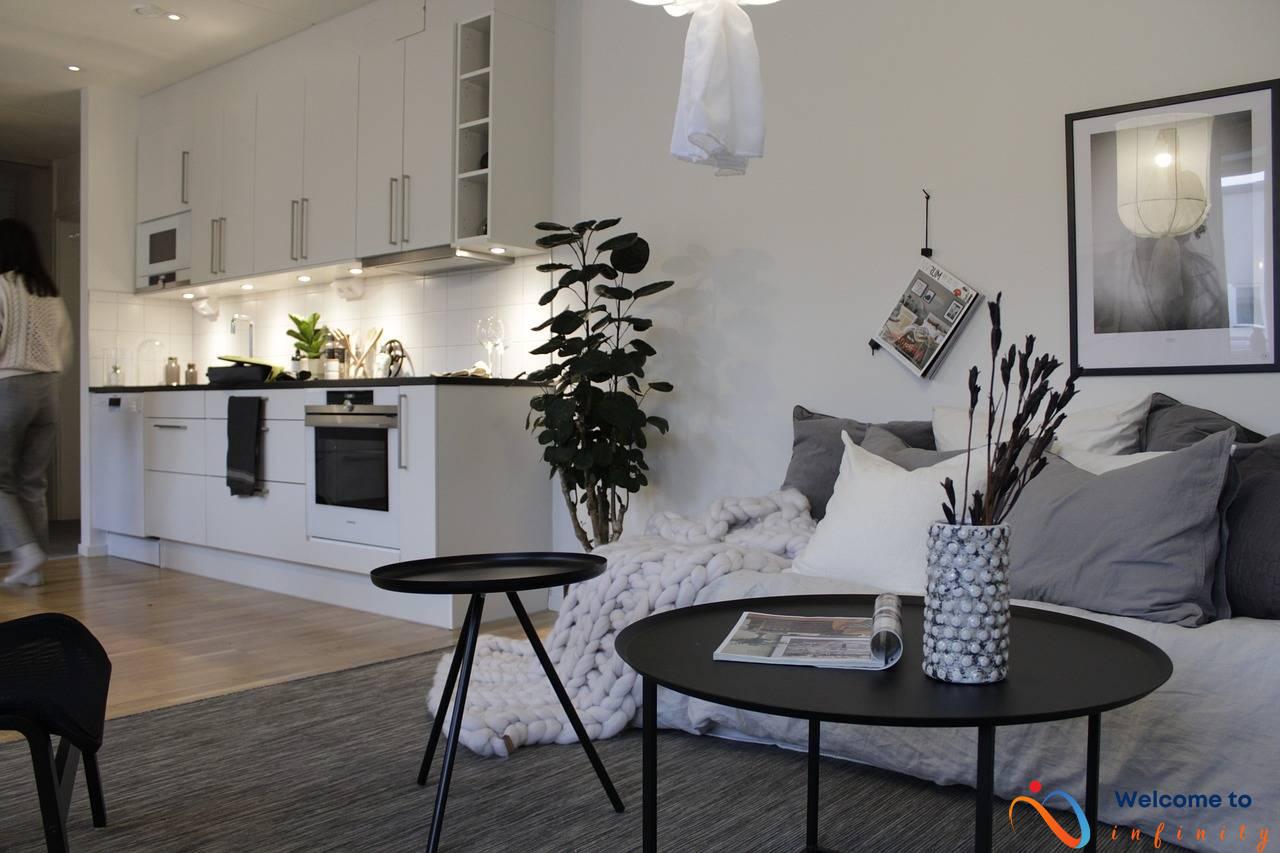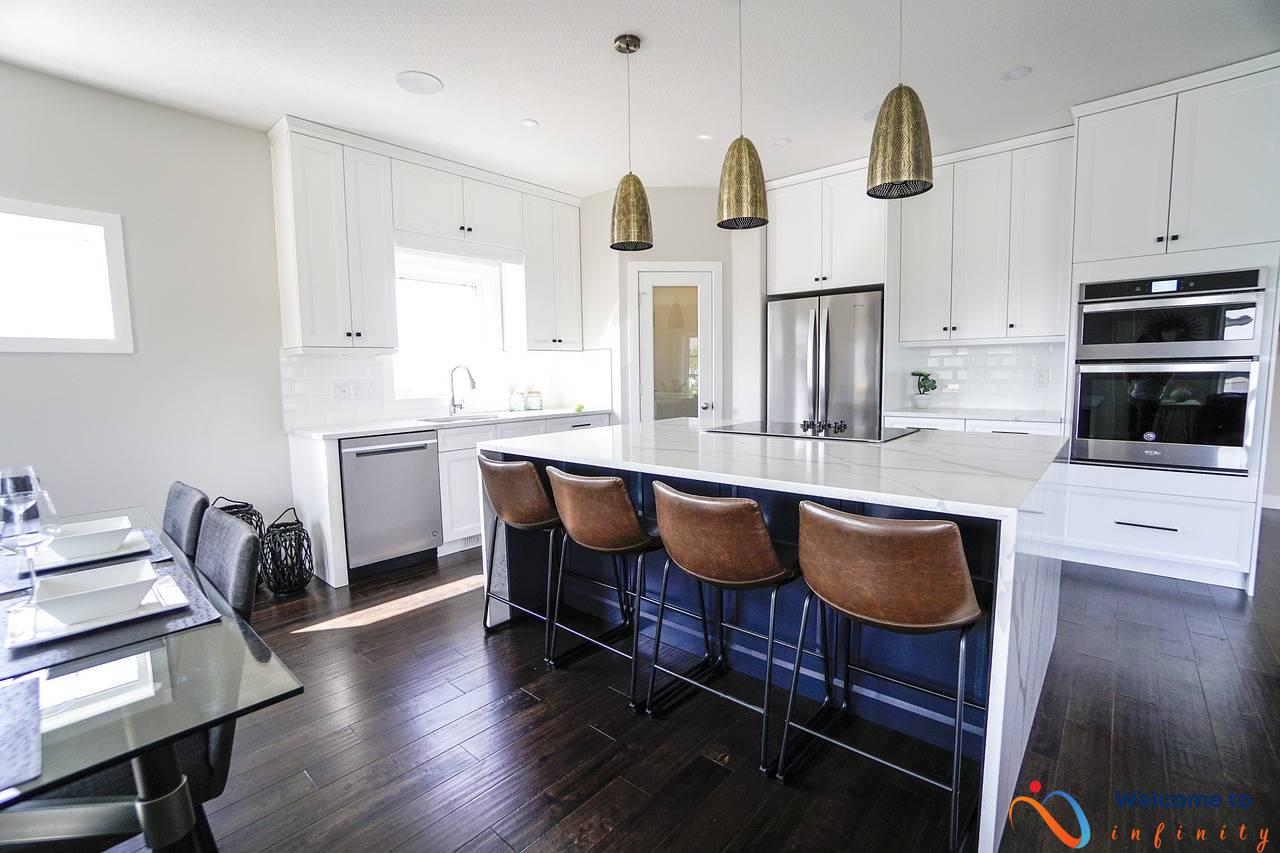When it comes to home decor, mixing patterns can add visual interest and personality to any room. However, it can also be a daunting task if not done properly. The right combination of patterns can make a room feel lively and stylish, while the wrong mix can create chaos and clash. In this article, we will guide you through the dos and don'ts of mixing patterns in your home decor, so you can create a cohesive and delightful environment.
To begin with, it is important to understand the vocabulary of patterns. When mixing patterns, it's essential to compare and contrast different kinds of prints and textures for a cohesive look. The key is to balance the size, shape, and color of the patterns. Using a variety of patterns can help a room feel more interesting and dynamic, without overwhelming the senses.
Another important aspect to consider is the rule of three. This means limiting the number of patterns in your space to three. This creates a balanced and cohesive look without becoming too busy. Additionally, successful color combinations can make a big impact on the overall aesthetic. You can play safe with neutrals, using them as a base and layering in bolder patterns for a chic and dramatic effect. Alternatively, you can punch up a space with bright, bold patterns that infuse energy, excitement, and character into a room.
It is also crucial to understand how texture complements and contrasts with pattern and color. Texture adds dimension and depth to a room and can be used to create visual interest without adding too much clutter. Mixing textures is particularly useful for creating a harmonious look without relying on pattern alone.
Finally, here are some tips for mixing and matching patterns successfully:
- Stick to a color palette to create a cohesive look.
- Choose patterns that are similar in scale.
- Mix patterns that have similar colors or share a common hue.
- Avoid mixing competing patterns (for example, stripes and polka dots).
- When in doubt, use a neutral pattern as a base and layer on top of it.
By following these dos and don'ts, you can successfully blend different patterns in your home decor to enhance its visual interest and appeal. Mixing patterns is an art form, but with a little practice and experimentation, anyone can master it.
Understanding Patterns
Decorating your home with patterns is a great way to add visual interest and create a personalized style. However, mixing patterns can be tricky and requires some knowledge and finesse to get it right. Understanding the vocabulary of patterns is crucial in achieving a cohesive and stylish look.
When it comes to patterns, you can choose from stripes, florals, polka dots, paisleys, chevrons, and many other prints. Each pattern has its own visual impact and language. Stripes can elongate a space, while florals can add a natural and romantic touch. Polka dots are playful, and paisleys are intricate and sophisticated.
Texture is also an essential part of patterns. You can mix smooth textures like silk or linen with more tactile ones like wool or knit. Texture creates a sense of depth and adds a cozy factor to your decor. Consider the texture of each pattern when comparing and contrasting them.
To achieve a cohesive look, choose patterns that have a similar style, color scheme, or scale. For instance, if you have a small floral pattern on your pillow, pair it with a larger floral pattern on your curtains. You can also mix patterns by choosing one dominant pattern and others that complement it in color and texture. Don't be afraid to mix patterns, but make sure to do it in a thoughtful and intentional way.
In summary, understanding patterns and their vocabulary is crucial in mixing them successfully. Choosing patterns based on their style, color scheme, scale, and texture can help you create a cohesive and personalized space that reflects your personality and taste. Start experimenting with patterns and textures, and have fun creating your own unique decor style.
The Rule of Three
The secret to mixing patterns lies in the rule of three. This guideline suggests using three patterns in a room as a maximum, as going beyond this number can make the space feel overwhelming and cluttered. Start by choosing one dominant pattern as the focal point, such as a floral or geometric design, and use it on a large-scale element like your curtains or area rug. Then, choose two additional patterns that complement the dominant one but don't compete with it. For instance, you could pair a solid color with a subtle stripe or a small dot pattern with a larger geometric one.
When working with multiple patterns, try to stick to a cohesive color palette to create a harmonious look. You can also vary the scale of the patterns to add visual interest without overwhelming the space. For instance, pair a bold floral with a smaller scale polka dot or a medium-scale stripe. Additionally, using solids and textures can help break up the patterns and add some breathing room for the eyes.
Another way to create a cohesive look when mixing patterns is to use a unifying element. This could be a common color or a shared design detail that runs through each pattern, such as a repeated shape or motif. This will help tie everything together and create a cohesive and polished space.
Remember, mixing patterns is all about balance and moderation. Use the rule of three as a starting point and experiment until you find a combination that feels harmonious and visually stimulating. By following these tips, you can master the art of pattern mixing and create a stunning and inviting home décor.
Successful Color Combos
Color is a powerful tool in interior design, and when combined with patterns, it can create a harmonious and visually appealing decor. However, it's important to understand how colors interact with each other before you start mixing and matching different hues and shades.
One effective way to combine patterns and colors is by using a color wheel. A color wheel shows the relationship between different colors and helps you create a balanced and cohesive color scheme. For example, colors that are opposite each other on the wheel, such as blue and orange or red and green, create a complementary color scheme that is visually striking.
Another way to mix patterns and colors is by using the rule of three. Choose three colors- one dominant color, one secondary color, and one accent color- and stick to them throughout the room. This creates a sense of consistency and cohesion in your decor.
You can also create a harmonious color palette by using variations of the same color. For instance, using different shades of blue in your decor, from light pastels to bold teals, can create a serene and cohesive atmosphere. Similarly, using different textures of the same color, such as mixing a plush velvet with a textured linen, can add depth and interest to your decor.
When mixing patterns and colors, it's important to keep the scale in mind. Use larger patterns sparingly, such as in a bold accent wall or a statement piece of furniture, and balance them with smaller patterns throughout the room. You can also use neutrals as a base and layer in bolder patterns and colors for a dramatic effect.
In conclusion, successful color combinations in home decor involve understanding the relationship between different colors and patterns, choosing a dominant color scheme, experimenting with variations of the same color, and using patterns in a balanced and cohesive way. With these tips in mind, you can create a beautiful and tasteful space that reflects your personal style.
Playing Safe with Neutrals
When it comes to mixing patterns in your home decor, playing it safe with neutral patterns can be a great starting point. Neutral patterns like stripes, checks, and dots can provide a solid base for your room design and can be easily layered with bolder patterns for a chic and dramatic effect.
One way to use neutrals effectively is by choosing a neutral color scheme for the room, such as beige, gray, or white. This creates a calming and sophisticated atmosphere that can be enhanced with bold accents of color and pattern. For example, you can add a pop of color with a bright cushion or a bold rug that features a geometric print.
Another way to play it safe with neutrals is by opting for classic patterns like herringbone, gingham, or paisley. These timeless patterns have a subtle texture that complements the room's decor without overpowering it. Plus, they can be easily mixed and matched with other patterns for a creative and eclectic look.
When layering neutrals with bolder patterns, it's important to choose patterns that are of different scales and textures. For example, you can pair a small-scale floral print with a larger geometric print, or a smooth velvet fabric with a rough linen texture. This creates a visual interest and adds depth to the room design.
- Use neutral patterns as a base for your room design.
- Choose a neutral color scheme, such as beige or gray.
- Opt for classic patterns like herringbone or paisley.
- Use patterns of different scales and textures when layering with bolder patterns.
By playing it safe with neutrals, you can create a timeless and elegant space that is both calming and visually appealing. Use these tips to effectively layer in bolder patterns and colors for a chic and dramatic effect that will wow your guests.
Punching Up with Brights
Adding bright, bold patterns to your home decor is a great way to infuse energy and excitement into your space. Start with a neutral or solid color base, such as a white or beige sofa or walls, and add in pops of bold hues and patterns to create a dramatic effect.
When incorporating brights, remember to keep balance in mind. Use bold patterns sparingly and pair them with more subdued shades to avoid overwhelming the room. For example, a brightly patterned accent chair can be balanced with neutral throw pillows and a solid-colored rug.
Another way to punch up your decor with brights is to use complementing colors. Consult a color wheel to help guide you in choosing colors that work well together. Consider pairing blue patterns with orange accents or yellow patterns with purple accents for a striking combination.
Overall, don't be afraid to have fun and play with patterns when adding bright colors to your home decor. Just remember to keep balance, consider complementing colors, and use patterns sparingly to create a cohesive and inviting atmosphere.
Understanding Texture
Texture is an often overlooked aspect of home decor, but it can have a significant impact on the look and feel of a room. Texture refers to the surface quality of an item, including its roughness, smoothness, softness, and hardness. When it comes to mixing patterns, texture can either complement or contrast with other elements like pattern and color.
When combining different textures, it's essential to find a balance between too much and too little. Too much texture can be overwhelming, while too little can make a space feel flat and sterile. A table runner with a woven texture, for example, can add dimension and warmth to a smooth wooden table. Or, a furry throw pillow can create a cozy contrast against a sleek leather sofa.
One way to incorporate texture into your decor is through layering. Layering different textures, such as a soft wool rug on top of a rough jute one, can add depth and interest to a space. Another option is to mix and match different materials, such as metal, wood, and fabric, to create a tactile contrast.
When it comes to pattern and texture, it's important to consider how they work together. A bold patterned wallpaper can clash with a heavily textured rug, while a more subtle pattern can complement the texture of a woven throw pillow. Neutral textures, such as linen or burlap, can be a safe base to build upon with more vibrant patterns.
In summary, texture is an important element to consider when mixing patterns in your home decor. By finding a balance between different textures and considering how they work with patterns and color, you can create a visually appealing and comfortable space. So go ahead and experiment with different textures to add dimension and depth to your home.
Tips for Mixing Patterns
Mixing patterns can be intimidating, but it doesn't have to be! With these tips, you can create a visually interesting and appealing aesthetic in your home.
Start with a neutral base: Begin by choosing a neutral pattern, such as a solid or a simple stripe. This serves as a foundation for incorporating bolder patterns without overwhelming the space.
Use a color scheme: Choose a color palette of two to three colors and stick with it throughout the room. This helps keep the patterns cohesive, even if they're different styles or scales.
Vary pattern scale: Mix patterns of different sizes to add depth and interest to your space. A general rule of thumb is to have one large-scale pattern, one medium-scale pattern, and one small-scale pattern.
Pair complementary patterns: Combining patterns that have similar colors or motifs can create an effortless and coordinated look. Examples include stripes and florals, or polka dots and gingham.
Play with texture: Incorporating different textures, such as a woven blanket or a furry pillow, can add dimension to your space, even if the patterns themselves are minimal.
Use odd numbers: In design, odd numbers often create a more visually pleasing balance than even numbers. Use this principle when mixing patterns – try using three or five different patterns in the same room.
Use your intuition: Above all, trust your instincts and have fun with mixing patterns. It's important to create a space that reflects your personality and tastes, and there are no hard and fast rules when it comes to creativity!












